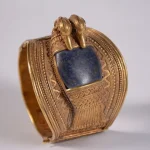Scarab Bracelet of Tutankhamun
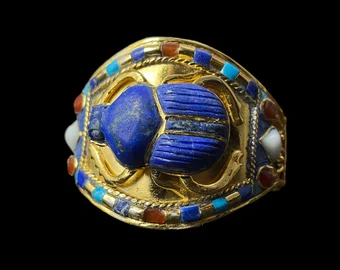
This scarab bracelet, originating from the tomb of Tutankhamun (1341–1323 BC) in the Valley of the Kings, exemplifies the rich symbolism and exquisite artistry of ancient Egypt.
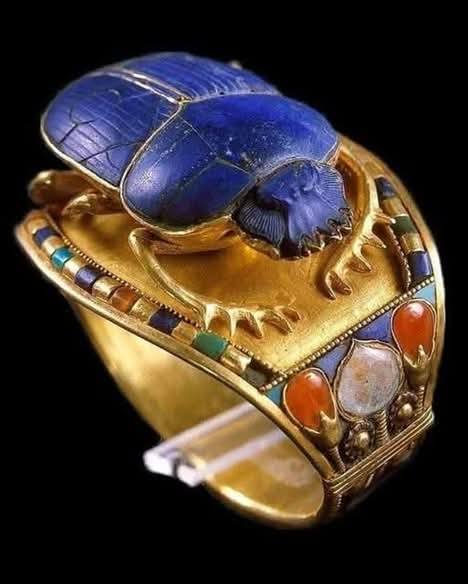
King Tutankhamun, commonly known as King Tut, was a pharaoh who ruled Egypt from 1332 to 1323 B.C. He ascended the throne as a child, around eight or nine years old, and his reign was guided by several influential figures, including Ay, the Grand Vizier and possibly Tut’s maternal grandfather, and Horemheb, the commander-in-chief of the military.
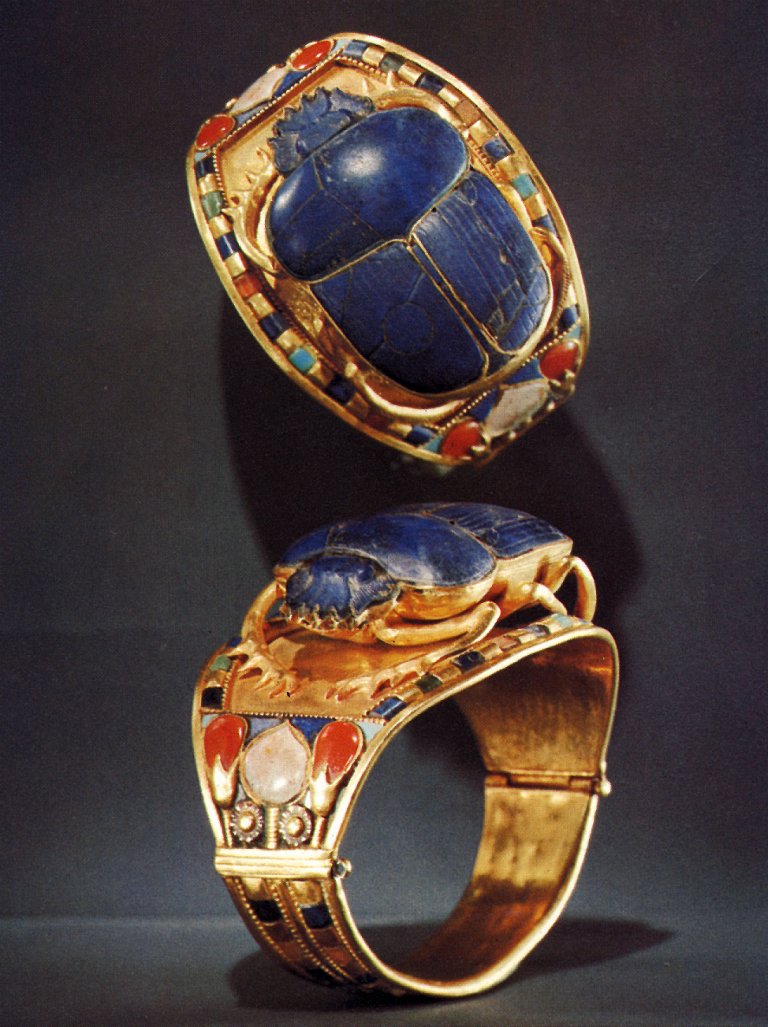
Although King Tut is famous today, his reign was brief and relatively minor in the broader history of ancient Egypt. He became historically significant only after his death, following the discovery of his remarkably well-preserved tomb and mummy in 1922, which offered invaluable insights into Egyptian history and culture.
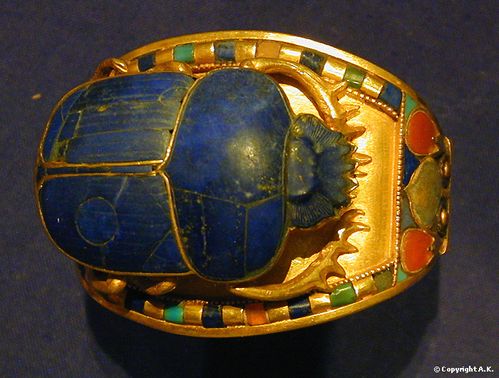
Tutankhamun’s most notable achievement during his life was the restoration of the cult of Amun-Ra and the return to traditional Egyptian polytheism, reversing the religious reforms of his father, Akhenaten.
Akhenaten, who ruled Egypt for approximately 17 years before Tut’s accession, was a controversial figure. He moved the capital to Amarna and radically transformed Egyptian religion by abolishing the traditional pantheon and elevating Aten, previously a minor deity, as the sole supreme god.









